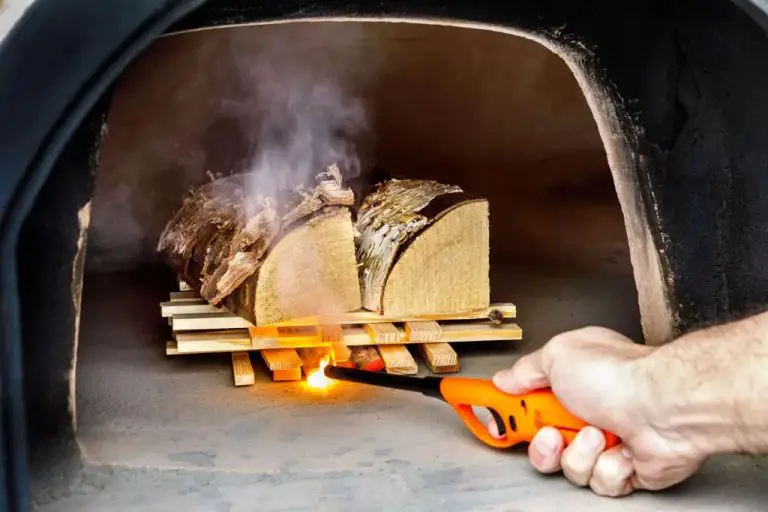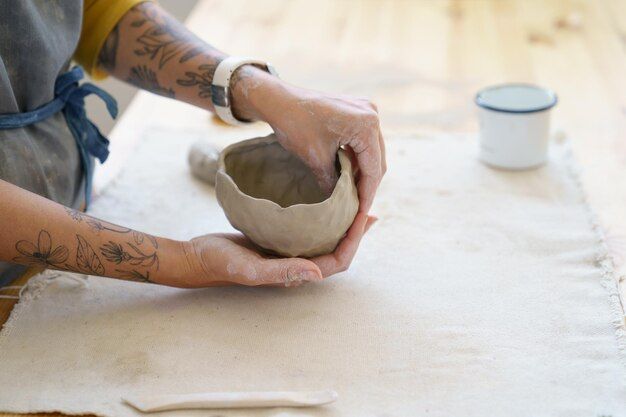What Paper Is Used For Clay Transfer Paper?
Clay transfer paper, also known as decal paper, is a useful tool for transferring images and designs onto polymer clay. It allows you to create intricate patterns, textures, and embellishments without having to hand-paint or hand-cut each individual piece. Clay transfer paper makes it easy to apply prints, photos, clipart, or your own artwork onto clay for jewelry, figurines, ornaments, and more. The image is printed in reverse onto the transfer paper, which is then applied onto the clay surface and sealed through baking. The paper burns away, leaving behind a perfect impression on the clay. This opens many creative doors for polymer clay artists and crafters.
Common Papers Used
There are a few common types of paper that work well for clay transfer paper.
Tracing Paper: This thin, translucent paper is one of the most popular choices. The smooth, lightweight texture allows the clay pattern to transfer cleanly onto the clay. Tracing paper comes in different weights, with lighter grades working best.
Printer Paper: Standard multipurpose printer paper works in a pinch for clay transfers. The downside is that regular copy paper can leave fibers in the clay. Using high quality inkjet papers minimizes this. Printer papers with a high rag content work best.
Tissue Paper: Tissue paper makes a great clay transfer material. It’s available in many colors and patterns while being thin and smooth enough for clean transfers. Using wax paper between the tissue and the clay keeps the tissue from sticking.
Tracing Paper
Tracing paper is one of the most common types of paper used for clay transfer. It is thin, translucent paper that allows light to pass through while still providing a surface to trace your design onto. Here are some of the key properties and benefits of using tracing paper:
Thin and Translucent – The thinness and translucence of tracing paper allows you to see through it to trace off of an existing pattern or template. This makes it easy to transfer any design onto your clay.
Smooth Surface – Tracing paper has a smooth, even surface that allows for clean transfer of pencil lines onto the clay. The smoothness prevents skipped lines or smudges.
Low Cost – Tracing paper is very inexpensive compared to other papers, making it a budget-friendly option for clay transfer.
Simple Handling – Tracing paper is lightweight and easy to cut, position, and trace on. It won’t rip easily when working with clay.
Minimal Tooth – Tooth refers to the texture of paper. Tracing paper has very minimal tooth, meaning it has a smooth surface that won’t leave behind fibers or particles on the clay.
Erasability – Pencil lines can be easily erased off of tracing paper if any mistakes are made when tracing the design.
With its translucence, smoothness, affordability and ease of use, tracing paper is one of the most reliable choices for DIY clay transfer projects.
Printer Paper
Printer paper is another commonly used type of paper for clay transfer. There are some key properties that make printer paper a good option:
- It’s smooth and thin, allowing for a clean transfer of the pattern onto the clay.
- The thinness allows it to contour well to dimensional surfaces.
- It’s inexpensive and easy to find at any office supply store.
- Printer paper is typically white, providing good contrast for tracing darker patterns.
- It can be run through a standard printer, allowing you to print any image or pattern you want directly onto the transfer paper.
The smoothness and ability to print make printer paper one of the most versatile and accessible choices. The thinness does mean it’s more delicate and prone to ripping than thicker papers. Overall, printer paper can be ideal for simple transfers onto flat clay surfaces.
Tissue Paper
Tissue paper is another common type of paper used for clay transfer. It refers to very thin, translucent paper made from various materials like wood pulp, cotton fibers, or even bamboo fibers. Here are some key properties and benefits of using tissue paper:
Thin and Lightweight – Tissue paper is extremely thin, usually between 0.0024” to 0.0059” thick. This makes it easy to press onto and transfer patterns onto clay. The thinness also makes tissue paper very lightweight.
Delicate and Absorbent – Due to the thin fibers, tissue paper has a very delicate, papery feel. The fibers also make tissue paper fairly absorbent compared to other papers. This absorbency can help pick up graphite and color from pencils, crayons or markers when transferring patterns.
Translucent and Smooth – Tissue paper is translucent enough that you can see outlines of patterns through it. Its thin structure also gives tissue paper a smooth surface for easy transfers.
Versatile and Accessible – Tissue paper is readily available at any supermarket or craft store, making it easy to access and experiment with. It comes in varieties like wax paper, crepe paper, and more, providing versatility.
With properties like thinness, translucency, absorbency and accessibility, tissue paper can be a great choice for clay transfer projects. It allows for intricate and detailed pattern transfers.
Other Papers
There are a few other types of paper that can work for clay transfer besides the most common options. Parchment paper, also known as baking paper, can be used successfully as clay transfer paper. The smooth side of parchment paper provides an even transfer surface. Wax paper is another option, as long as the wax coating is thin enough for the clay pattern to transfer through. Other materials like plastic sheets or acrylic can also work as long as they have a smooth, non-porous surface. Avoid using paper with pronounced textures as they may distort the clay design when transferring. The key is finding a material with the right blend of smoothness and durability. Parchment paper, wax paper, plastic sheets, and acrylic can all serve as alternatives if the more typical tracing, printer, or tissue papers are unavailable.
Paper Properties
When selecting paper for clay transfer, it’s important to consider properties like thickness, transparency, and absorbency. The ideal paper will allow the pattern to transfer clearly while still being sturdy enough for handling.
Thickness is one of the most important factors. Thinner tissue paper or tracing paper allows for very crisp transfers, but can be delicate and challenging to work with. Thicker printer paper makes transferring patterns more difficult, but is easier to handle and cut out shapes from.
The transparency of the paper also matters. More translucent paper will result in a sharper transfer, while opaque paper will produce a fainter transfer. Tissue paper is typically quite translucent, while printer paper is opaque.
Absorbency determines how readily the paper soaks up liquid clay medium during the transfer process. Highly absorbent paper leads to blurrier transfers as the clay soaks in, while less absorbent paper keeps a clearer pattern.
Testing out a few different paper types with your clay medium is the best way to determine which properties make for optimal transfers. The right balance of thickness, transparency and absorbency will depend on your specific clay project.
Tips for Choosing Paper
When selecting paper for clay transfer, keep the following tips in mind:
- Choose a thin, smooth paper. Thicker papers don’t allow the clay to pick up the details as well.
- Avoid textured papers like watercolor paper, as the texture will transfer to the clay.
- Tracing paper works well, but can tear more easily. Handle it gently.
- Printer paper is a budget-friendly option. Opt for 20lb over regular copy paper for better results.
- Tissue paper transfers nicely when layered. Use 2-3 sheets for the right amount of translucency.
- Stick to matte finishes. Glossy paper can make remove tricky.
- Do a test transfer first with any new paper type to ensure it works with your clay brand.
- For extra smooth transfers, try a paper made specifically for polymer clay.
Choosing the right paper for your project takes some experimentation. Focus on papers that are thin, smooth, and matte for best results.
Process of Using Clay Transfer Paper
Using clay transfer paper is a simple process that involves just a few steps:
1. Start with a clean, smooth surface to transfer the image onto. This is usually polymer clay, but can also be other materials like wood, glass or metal.
2. Cut or tear off a piece of clay transfer paper slightly larger than the image area.
3. Position and trace the outline of the image onto the shiny side of the transfer paper using a ballpoint pen or stylus. Apply firm pressure so the image transfers clearly.
4. Place the transfer paper shiny side down onto the surface you want to transfer the image to. Rub firmly over the back of the paper with a spoon, craft stick or your fingers.
5. Carefully peel back the transfer paper to reveal the transferred image now on the surface below. The image may look faded at first but will darken as the surface is cured/dried.
6. If needed, go over the transferred outlines with a pen or paint to enhance them. Fill in details as desired with clay, paints or other media.
7. Seal and cure the finished piece according to the clay or material instructions. The transferred image is now permanently affixed.
Conclusion
In summary, while different types of paper can be used for clay transfer paper, some work better than others. Thin, smooth paper tends to transfer clay designs more cleanly. Paper that is too thick or textured may leave residue behind or make it hard to see intricate details. Tracing paper, printer/copier paper, and tissue paper are common choices. The paper you use depends on factors like the clay type and complexity of the design. Regardless of paper, be sure to take care pressing firmly when transferring and removing any excess clay after. With the right paper and technique, clay transfer is an easy way to duplicate or reverse your original artwork. The possibilities are endless for creative clay projects using paper transfers.
To conclude, experiment with different readily available papers to find one that works for your specific clay and design. Consider the paper’s thickness, texture, and transparency. With practice, you’ll get the hang of which papers transfer clay best for your unique projects. Clay transferring opens up many decorative options that would be difficult to do freehand. Give it a try and you may find yourself discovering even more creative ways to use this fun technique.


